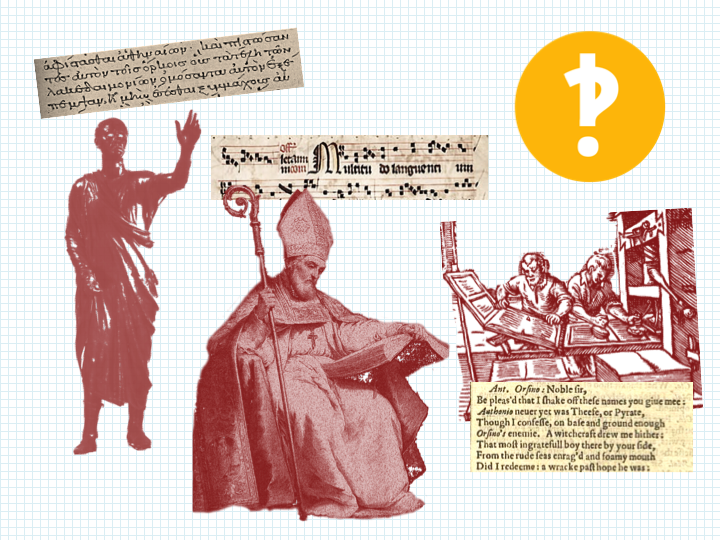9 Incredible Facts About The History Of Handwriting

While today we can get machines to write for us, for most of human history, writing was a manual endeavor. And there are people who are super passionate about keeping it that way. Some schools are building handwriting requirements into their curriculums, although even the positive research results on the benefits of handwriting over typing aren’t big enough to be super conclusive, and some studies find that cursive, in particular, probably isn’t any better than other methods of putting words to paper. But handwriting has a long and storied tradition in human history, and if only for that reason, it’s not going away anytime soon.
1. The World's First Writing System Was Tiny.
Cuneiform, the Sumerian writing system that emerged from Mesopotamia 5000 years ago, was usually etched into clay tablets that were often only a few inches wide. Expert describes most of the Cuneiform tablets she handled at the Morgan Library & Museum in New York as being only half the size of her iPhone.
2. Medieval Writing Was Regional.

After the fall of the Roman Empire, different scripts developed regionally as writers embellished and tweaked existing systems to create their own styles. However, this made books a little hard to read for those not educated in that exact script. All books were written in Latin, but the letters were so different that many scribes couldn’t read writing from other regions.
3. There Is An Entire File Devoted To Reading Handwriting.
Don’t feel bad if you can’t decipher other people’s writing easily. The truth is, most of us already cannot read 99 percent of the historic record. Paleographers study for years to specialize in particular scripts used in a certain time and certain context, such as medieval book scripts or 18th century legal documents. "In other words, even someone whose life work is dedicated to reading cursive cannot read most cursive", expert says.
4. Charlemagne Was A Stickler For Handwriting.
The emperor — who was largely illiterate himself — decreed in the 9th century that the same script be used across the Holy Roman Empire, an area that covered most of Western Europe. Called Carolingian minuscule, the uniform script dominated writing in France, Germany, Northern Italy, and England until the 11th century. The Gothic script we associate with medieval times today is a derivation of Carolingian minuscule that popped up during the 12th century. It was later revived in the 15th century, and became the basis for Western typography.
5. Monks Were Not Fans Of Printing Presses.

The 15th century monk Johannes Trithemius defended the need for handwriting in his essay "In Praise of Scribes." He claimed that while scripture could last 1000 years, the printed book was "thing of paper and in a short time will decay entirely." Printing would make books unsightly and introduce spelling errors, and he predicted that history would judge "the manuscript book superior to the printed book." Indeed, Martin Luther complained of books much like people today complain about the quality of writing online, saying "the multitude of books is a great evil. There is no measure or limit to this form of writing."
6. The First Font Was Very Script-Like.
The first printed books were designed to look a whole lot like the manuscripts of that day, so as not to shock people with newfangled design. Johannes Gutenberg and his hired craftsmen hand-carved an elaborate Gothic script into 290 unique characters for the printing press, allowing the printer to recreate every letter in upper- and lowercase, as well as punctuation, so that the type looked just like what a scribe would make. The first letters of every section were even red, just like manuscript style dictated.
7. Historically, Handwriting Professionals Were Quite Upwardly Mobile.

When printing put scribes out of work, they instead became teachers, tutoring and writing books on penmanship. These writing masters became wealthy professionals in a way that they had never been as simple scribes. When businesses and governments began hiring secretaries for the first time, who would take dictation and have a working knowledge of several different scripts, it became an unusually effective way to rise up the class ranks in medieval Europe. The papal secretary was the highest position a commoner could occupy in society.
8. In The 17th Century, Handwriting Was Personally Revealing.

In the 16th and 17th centuries, different scripts became more than just a sign of where you learned. Specific scripts were established for classes and professions, and even for gender. Wealthy Europeans would use one script for their personal correspondence and another for their legal and business correspondence. A whole host of scripts in England were developed just for court use, making many documents completely illegible to anyone not trained in that specific style of writing.
9. Punctuation Was Rare Until The 18th Century.

Before literacy became widespread, spelling varied widely from person to person, and nothing was standardized. It became uniform over time, and the first dictionaries weren’t published until the 17th century. Even then, standardized spelling didn’t become regular for another century. Punctuation was even worse, remaining "largely non-existent or non-standardized," according to experts, until the 18th century.
Comments
Post a Comment